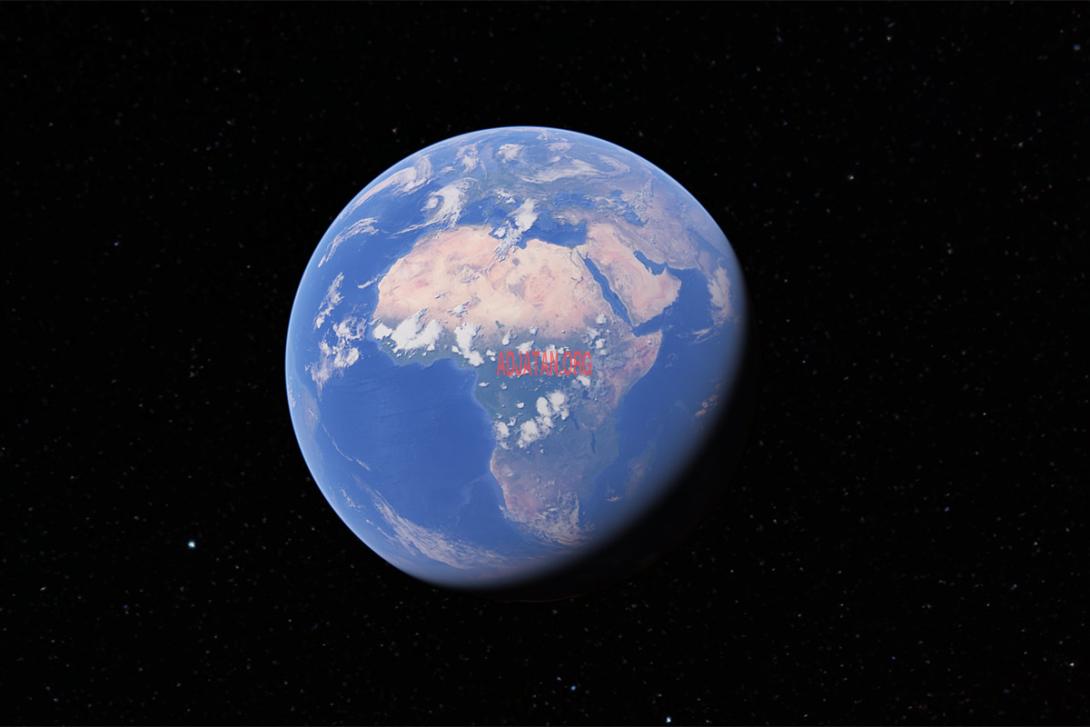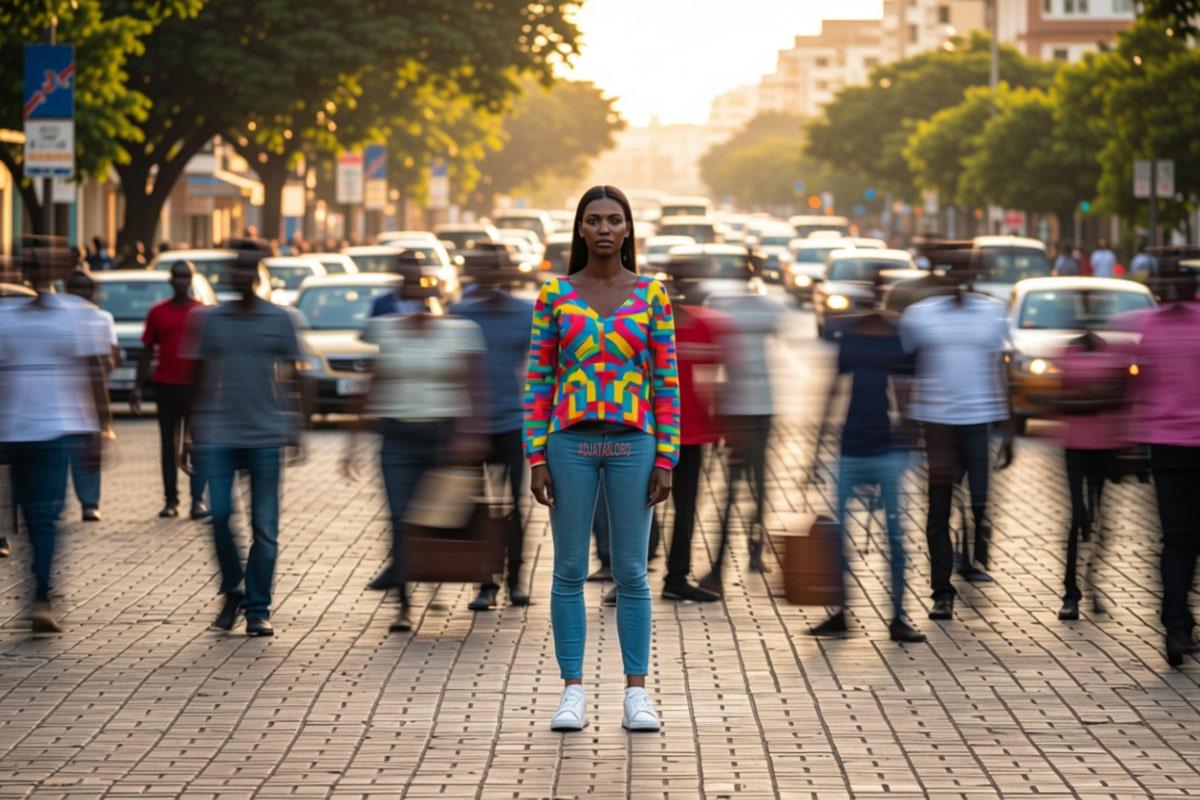
Artistic Interpretations, Corporate Branding, and Climate Change's Challenge to Continental Symbolism
As digital globalization reshapes how we understand continental identity and climate change threatens to redraw Africa's coastal boundaries, the iconic silhouette that has served as a powerful symbol for over half a century faces unprecedented challenges. This second part of our exploration examines how contemporary artists interpret the continental form, analyzes the widespread commercial adoption of Africa's outline in corporate branding, and considers what rising sea levels might mean for the future of this enduring symbol.
Artistic Reinterpretations and Contemporary Visual Culture
Contemporary artists across Africa and its diaspora have increasingly interrogated the continental silhouette, using it not merely as a symbol of unity but as a canvas for exploring the complexities and contradictions of modern African identity. Unlike the straightforward adoption of the outline by political movements in the 1960s, today's artistic engagement with the continental form is more nuanced, often deconstructive.
South African artist William Kentridge has employed fragmented maps and geographical imagery in his animated films and installations, using the distortion of familiar continental boundaries to explore themes of memory, violence, and historical trauma. His work suggests that the clean lines of the African silhouette can mask the messy realities of lived experience across the continent's diverse regions.
Similarly, Ghanaian-British artist Ibrahim Mahama has created large-scale installations using jute sacks—materials that cross borders throughout West Africa—arranged to suggest continental forms that are simultaneously recognizable and alien. His work challenges viewers to consider how economic flows and material exchanges create alternative geographies that don't conform to the neat boundaries of the iconic silhouette.
In the digital realm, African artists have pioneered new forms of continental representation. Nigerian digital artist Osborne Macharia creates afrofuturistic images that reimagine Africa's shape as a launching pad for space exploration, while South African photographer and visual artist Mohau Modisakeng uses aerial photography to create images that fragment and multiply the continental outline, suggesting both unity and diaspora simultaneously.
These artistic interventions reveal a growing sophistication in how the continental silhouette is deployed. Rather than simple affirmation, contemporary art uses Africa's iconic shape to pose questions about belonging, identity, and the relationship between geographical and cultural boundaries.
Corporate Appropriation: The Commercial Life of Continental Symbolism
Perhaps nowhere is the ubiquity of Africa's silhouette more evident than in the logos and branding of corporations, NGOs, and international organizations. The continental outline has become a shorthand for "African" in global commerce, appearing across industries from telecommunications to mining, from banking to tourism.
Verified Corporate and Institutional Usage Examples:
Pan-African Organizations: African Union, Economic Community of West African States (ECOWAS), Central African Economic and Monetary Union (CEMAC)
Financial & Development: African Development Bank, Africa CEO Forum, Africa Investment Forum
Aviation: ASKY Airlines (West and Central Africa)
Agriculture & Development: Alliance for a Green Revolution in Africa (AGRA)
Media & Culture: AllAfrica.com, Pan-African Film and Television Festival of Ouagadougou (FESPACO)
Education: Université Catholique d'Afrique de l'Ouest (UCAO)
Sports: Confederation of African Football (CAF)
Corporate: Bel Africa (subsidiary of Bel Group)
This commercial adoption raises important questions about ownership and representation. When multinational corporations use Africa's silhouette in their branding, they tap into the emotional and cultural associations that African liberation movements worked to establish. The outline that once symbolized resistance to colonial exploitation now often appears in the logos of companies extracting resources from the continent.
The standardization of Africa's shape in corporate branding has also led to a kind of visual homogenization. Despite the continent's enormous diversity—it contains over 50 countries, thousands of languages, and dramatically different climates and cultures—the simplified silhouette reduces this complexity to a single, marketable image.
The question of how African companies navigate between using continental symbolism and developing distinct brand identities remains complex, with different organizations taking varied approaches to representing their African identity through visual design.
Digital Globalization and the Multiplication of Africas
The digital age has fundamentally altered how continental symbols function. Social media platforms, mapping applications, and virtual reality environments have created new contexts for displaying and manipulating geographical imagery. Africa's silhouette now appears in countless variations: stylized emoji, animated graphics, interactive maps, and three-dimensional renderings.
Digital platforms have also enabled new forms of continental representation. On Instagram and TikTok, users create content using hashtags like #AfricaRising or #ProudlyAfrican, often accompanied by images or graphics featuring the continental outline. These platforms have democratized the use of continental symbolism, allowing individuals to deploy Africa's shape in personal branding and identity expression.
However, digital globalization has also revealed the limitations of the continental silhouette as a unifying symbol. Online African communities often organize around more specific regional, national, or cultural identities rather than continental ones. The hashtag #BeninTwitter, for instance, creates a more immediate sense of community than broader continental markers.
Google Earth and similar satellite mapping technologies have made high-resolution images of Africa's actual geographical features widely accessible. These detailed views can make the simplified continental silhouette appear almost cartoonish by comparison, highlighting the gap between symbolic representation and geographical reality.
Climate Change and the Morphing Silhouette
Rising Seas, Changing Shores
Climate change presents an unprecedented challenge to Africa's iconic silhouette. Sea level rise, coastal erosion, and extreme weather events are already beginning to reshape the continent's edges, potentially altering the very outline that has served as its most recognizable symbol.
Current projections suggest that sea levels could rise by 0.3 to 1.1 meters by 2100, with potentially catastrophic effects for Africa's coastal regions. The Nile Delta, which forms part of Africa's distinctive northeastern profile, faces severe threats from both sea level rise and reduced river flow. Alexandria and much of the Egyptian coast could be submerged, fundamentally altering the continent's northern outline.
West Africa's coastline, which forms the continent's distinctive western bulge, is experiencing some of the world's highest rates of coastal erosion. Countries like Benin, Togo, and parts of Ghana are losing meters of coastline annually. The distinctive curve that makes Africa's silhouette so recognizable could become significantly more jagged and irregular.
Agoue, Benin. Simon Adjatan. Jan. 2011
In East Africa, coral reef destruction and coastal erosion threaten the intricate coastline of countries like Kenya, Tanzania, and Mozambique. The "horn" of Africa—Somalia, Ethiopia, and Djibouti—faces increasing desertification and extreme weather that could alter inland boundaries as populations migrate.
Southern Africa's coastline faces different but equally serious challenges. Rising seas threaten major cities like Cape Town and Durban, while changes in ocean currents could alter the distinctive shape of the continent's southern tip.
Alternative Cartographies and Competing Representations
Climate change is not the only force challenging Africa's iconic silhouette. Alternative mapping traditions and contemporary cartographic innovations offer different ways of visualizing the continent that emphasize relationships, flows, and connections rather than fixed boundaries.
Indigenous mapping traditions across Africa have historically emphasized routes, relationships, and seasonal variations rather than fixed territorial boundaries. Tuareg maps of the Sahara, for instance, focus on caravan routes, water sources, and seasonal pastures rather than the linear borders that appear on European-derived maps. These alternative cartographies suggest different ways of understanding continental space that don't privilege the outline-as-symbol.
Contemporary "flow maps" that visualize migration patterns, trade relationships, and communication networks reveal Africa as a continent in constant motion, connected to the world through multiple channels that don't respect the neat boundaries of the traditional silhouette. Mobile phone data, for instance, shows communication patterns that cross national borders and connect Africa to global networks in ways that the continental outline cannot capture.
Population density maps present another alternative to the standard silhouette. These visualizations show Africa's actual human geography—the dense populations of the Nile Valley, the sparse settlement of the Sahara, the urban concentrations of West Africa—in ways that reveal the arbitrariness of treating the continent as a unified whole.
Economic flow maps that track everything from remittances to commodity prices show Africa integrated into global systems that transcend continental boundaries. Chinese investment patterns, for instance, create new geographies that link African locations to Asian markets in ways that have little to do with traditional continental groupings.
Future Implications: The Persistence and Transformation of Symbolic Power
Despite these challenges, Africa's silhouette shows remarkable resilience as a symbol. The very changes threatening its geographical accuracy may paradoxically strengthen its emotional resonance. As climate change becomes an increasingly urgent global issue, the potential transformation of Africa's coastline could transform the continental outline from a symbol of cultural identity into a symbol of climate vulnerability.
Environmental organizations have already begun using modified versions of Africa's silhouette to illustrate climate impacts. Maps showing projected sea level rise or desertification often use the familiar continental outline as a baseline, making the changes more visually dramatic and emotionally compelling.
The digitization of African economies and societies may also give new life to continental symbolism. As African countries develop continental free trade agreements and digital currencies, the need for unifying symbols may actually increase rather than decrease. The African Continental Free Trade Area (AfCFTA), launched in 2021, uses variations of the continental silhouette in its branding, suggesting continued relevance for continental symbols in economic integration.
Virtual and augmented reality technologies may also create new contexts for continental symbolism. As African cities develop "smart city" technologies and digital twin models, the continental silhouette could become an interface for accessing information about different regions, functioning as both symbol and practical tool.
Conclusion: An Icon in Transition
Africa's silhouette has proven to be one of the most durable and powerful geographical symbols in modern visual culture. From its origins in colonial cartography through its appropriation by liberation movements to its current ubiquity in corporate branding and digital media, the continental outline has demonstrated a remarkable ability to adapt to changing contexts while maintaining its core symbolic function.
However, the coming decades will test this resilience in unprecedented ways. Climate change threatens to physically alter the coastlines that define the iconic silhouette, while digital globalization creates new forms of connection and identity that may transcend geographical boundaries altogether. Contemporary artists and activists are already experimenting with fragmented, multiplied, and reconceptualized versions of the continental form.
The future of Africa's silhouette as a symbol may depend less on its geographical accuracy than on its continued ability to evoke shared experiences and aspirations. As climate change, technological transformation, and economic integration reshape the continent, the outline that has served as a symbol of unity, resistance, and identity for over half a century will likely evolve in ways we cannot yet fully anticipate.
What seems certain is that any transformation of this iconic symbol will reflect broader changes in how African peoples understand their relationship to place, to each other, and to the world. The continental silhouette may change, but its power to condense complex meanings into a simple, recognizable form ensures its continued relevance in an era of rapid global transformation.
This concludes our two-part exploration of Africa's continental silhouette as a global icon. As this symbol continues to evolve in response to environmental, technological, and cultural changes, it remains a powerful lens through which to examine questions of identity, belonging, and representation in an interconnected world. Part 1





